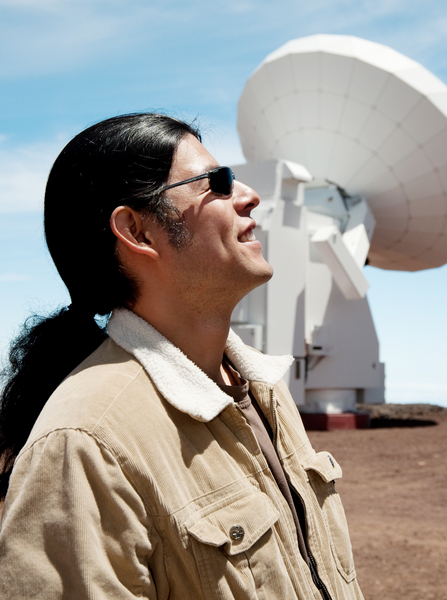
Jason Choi was born on Oahu and raised on Kaua‘i, where he graduated from Waimea High School. He is currently enrolled in the Electronics program at Kaua‘i Community College. Jason enjoys cooking, playing music, video games, traveling, and going to the gym. Just kidding, he hates the gym (but he goes anyway).
Home Island: Kaua’i
Institution when accepted: Kaua’i Community College
Akamai Project: Distance Learning: Remotely Monitoring Test Points at SMA
Project Site: Academia Sinica Institute of Astronomy and Astrophysics/SAO
Mentor: Derek Kubo & Paul Yamaguchi
The Smithsonian Submillimeter Array (SMA) is an interferometric telescope that consists of eight movable antennas. Troubleshooting these antennas can take hours, as technicians must travel to the summit and manually search at each antenna for the cause of a problem, using test points that are located in sealed enclosures. To remedy this, a remote antenna monitoring system (AMS) is being implemented to monitor key RF test points that convey the health and status of the receiver and the intermediate frequency/local oscillator (IF/LO) system. With the AMS in place, up to 20 signals can be monitored in minutes, and software can automatically capture signals to show trends in the data. My project was to build a component for the AMS that allows a technician to choose which test point to observe. It consists of a DC power supply, an Ethernet interface to relay communications, and a relay unit called the “ADAM 5000” that selects the particular signal to be viewed. The build process was split into three phases. First, I modified the metal housing to accommodate the components and external connections. Next, I constructed a series of circuit boards for the ADAM unit to facilitate signal selection. Finally, I fabricated the necessary cabling to make the internal connections and assembled the unit. Once completed, I installed the completed housing in Antenna 6 on the summit of Mauna Kea. With the completed AMS in place, troubleshooting the receiver in the antenna cabin at SMA will become far more efficient.